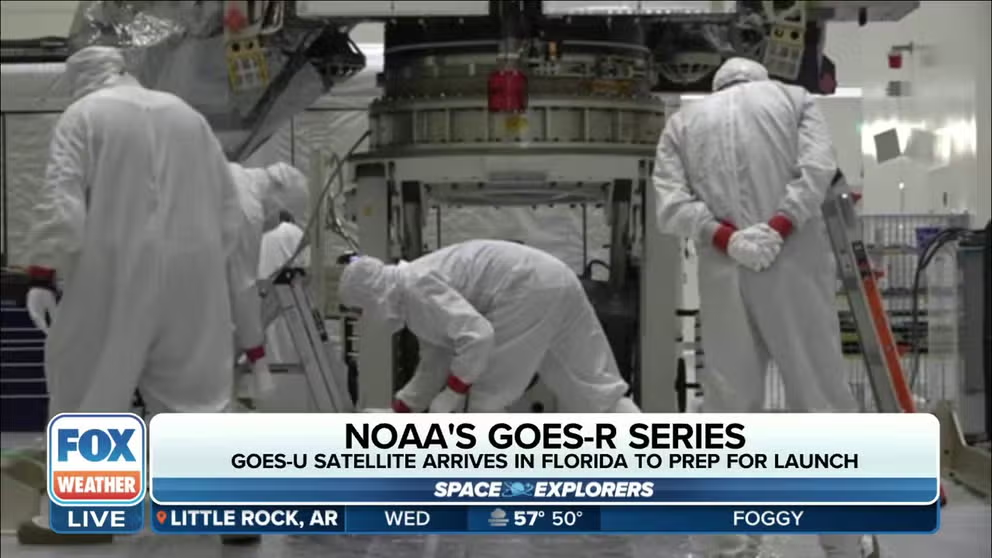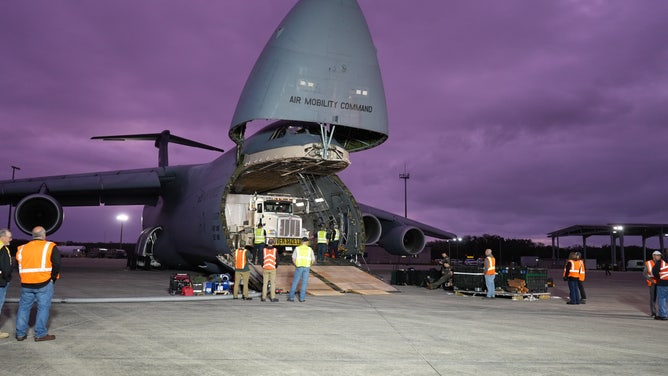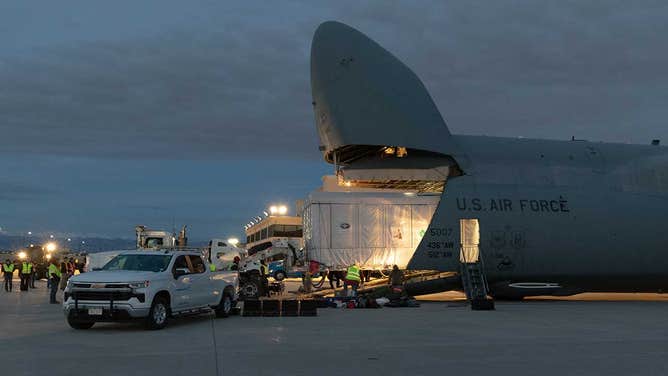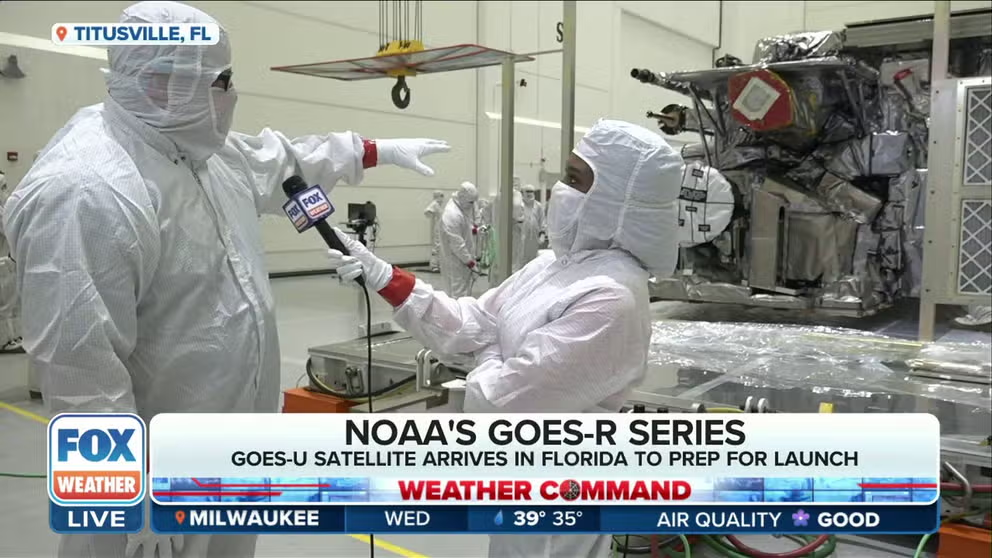NOAA's next great weather satellite arrives in Florida ahead of April Falcon Heavy launch
NOAA, NASA and SpaceX are targeting no earlier than April 30 to launch the final GOES spacecraft in the GOES-R weather satellite constellation.
NASA satellite program aims to help forecasters better predict weather events
FOX Weather's Brandy Campbell was at Florida's Space Coast for the arrival of a GOES-U satellite that is being prepared for launch.
KENNEDY SPACE CENTER, Fla. – GOES-U, NOAA's next advanced weather satellite, arrived at NASA's Kennedy Space Center on Tuesday before a late April launch.
GOES-U is the final satellite in NOAA's Geostationary Operational Environmental Satellites (GOES) – R Series and will monitor the weather and environmental systems throughout the Western Hemisphere. NASA and SpaceX are targeting no earlier than April 30 to launch GOES-U on a SpaceX Falcon Heavy rocket.
‘IT SAVES LIVES’: LIGHTNING MAPPER CRUCIAL FEATURE FOR GOES SERIES
The school-bus-sized satellite was transported from Lockheed Martin's facility in Colorado to Florida on Tuesday, landing on the old space shuttle runway. A specialized container with the 6,000-pound satellite was loaded onto the U.S. Air Force's C-5M Super Galaxy cargo transporter and flown to Kennedy Space Center on Tuesday, landing on the historic space shuttle runway.
According to NOAA, GOES-U will spend time on the test stand at Astrotech Space Operations' spacecraft processing facility, where it will go through a series of electrical tests to verify it's ready for launch.
FOX Weather reporter Brandy Campbell was in Titusville, Florida inside the Astrotech airlock room before the spacecraft was moved to the clean room.
There is an extensive process to verify the satellite and its seven instruments are all ready for launch.
"All the instrument teams are going to be coming in and doing checkouts and cleaning on all of their instruments. Our Lockheed (Martin) team is also going to be doing overall cleaning of the vehicle, doing electrical checkouts to make sure all the systems are working and survive transportation and then are all ready to go prior to launch," ALTO Mechanical Manager Matt Kettering said.
The spacecraft will be fueled with 5,000 pounds of propellant before being encapsulated into the Falcon Heavy fairings or nose cone.
Final GOES-R weather satellite arrives at Kennedy Space Center
NOAA's next weather satellite, and the last of the GOES-R series, arrived in Florida ahead of the April liftoff. FOX Weather's Brandy Campbell is just outside the Astrotech cleanroom where the GOES-U satellite is being prepared to launch.
THE MORE YOU GOES: 7 THINGS TO KNOW ABOUT NOAA'S WEATHER SATELLITES
Once in orbit over 22,000 miles above Earth, GOES-U will be renamed GOES-19 and watch over the Eastern Coast. NOAA and NASA launched the third satellite, GOES-18, in the GOES-R series in March 2022.
With a suite of seven instruments, with the Advanced Baseline Imager (ABI) the satellite will monitor hurricanes and weather patterns at high resolution every 30 seconds.
"That's what we consider sort of the primary instrument on the satellite," NOAA GOES Chief Scientist Dan Lindsey said. "This is essentially a big camera up in space that's taking a picture of the clouds and taking a picture of the land."
The satellite is also equipped with an instrument known as SUVI that monitors the Sun for space weather events that cause geomagnetic storms here on Earth.
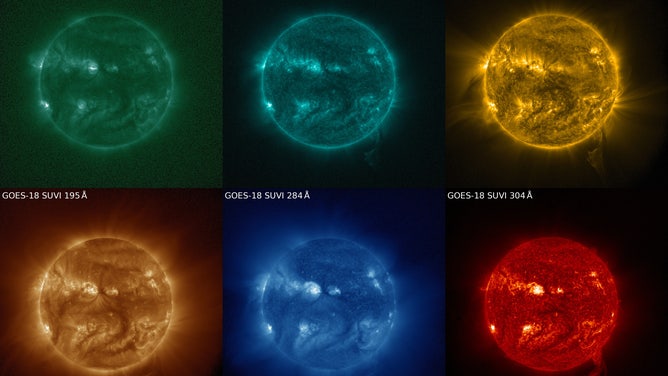
The GOES-18 SUVI observes the sun in six X-ray and extreme-ultraviolet (EUV) channels, as seen in the image above. The clearest depiction of the CME captured on July 10,2022 is in the 304A channel (lower right in red).
(NOAA)
GOES-U will help forecasters monitor and forecast severe thunderstorms with the lightning mapper instrument, a crucial tool for increasing the lead time for severe thunderstorms and tornado warnings.
"It detects lightning from space. So when there's a thunderstorm in the area, we know about it very quickly," Lindsey said.
As GOES-U is the last satellite in the GOES-R series, NASA and NOAA are planning for the next-generation weather satellites known as the Geostationary Extended Observations, or GeoXO, satellite system. NOAA and NASA plan to begin launching the GeoXO series in the 2030s.
